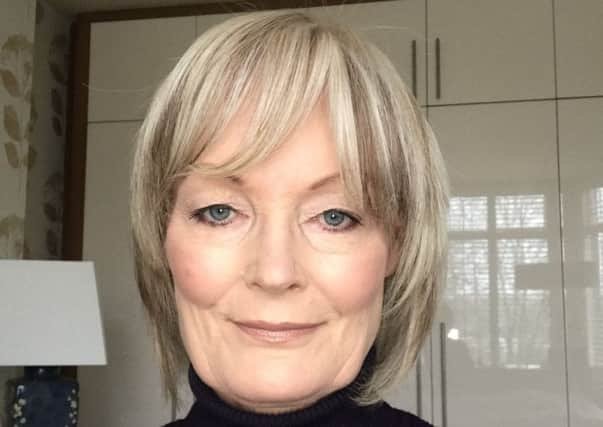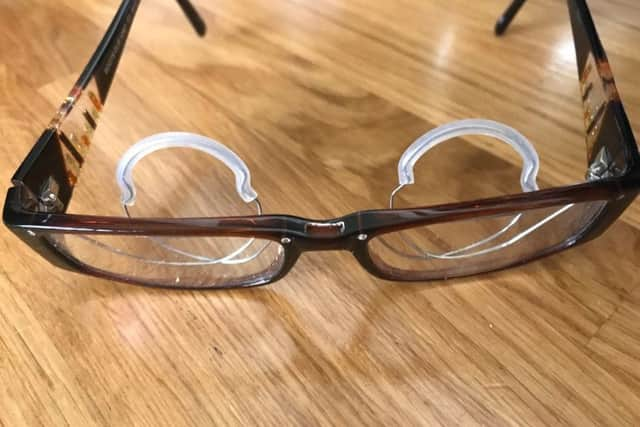Botox helps woman with rare condition which caused her eyes to close with no warning


For 63-year-old Pauline Williams, from Settle, life took a dramatic turn when an eye condition led to loss of her work, hobbies and independence.
Over the past decade, Pauline had been aware of very intense sensitivity to lights which would disturb her vision, but then four years ago the world went black as both of her eyelids would close and stay shut of their own accord – they would close involuntarily and she had no control to naturally open them.
Advertisement
Hide AdAdvertisement
Hide AdShe first went to see an ophthalmologist, who suggested this was part of the natural ageing process. However, over the next couple years it became worse and more frequent.


“It had progressed into my face, neck and vocal chords, so I was struggling to speak properly and getting contortions in my face,” explains Pauline.
“I was referred to a neurologist and diagnosed with the rare Meige syndrome. The treatment is pharmacological medication, but mainly botox injections, but they did not seem to help.”
She worked as an HR business partner for a financial services company, and admitted doing an interview when her eyes closed – which was both embarrassing for her and disconcerting for the candidate. She soon realised she could not continue to work with this lack of control over her eyes.
Advertisement
Hide AdAdvertisement
Hide Ad“My eyes have been getting worse over time but I got to the point where they could shut at any point, stay closed for either seconds or several minutes – some days I could hardly open them at all. There was no knowing when that would happen and it was like a paralysis – I had to physically pull my eyelids back open and hold them there.


“I even had a pair of glasses made with metal clamps on them, to hook my eyelids onto to keep them open for reading, inset – it was dreadful and so uncomfortable but I was desperate.”
“The timings were both good and bad, in that my husband was just retiring and had great plans for his free time, to go off cycling on his lovely new bike and develop his photography skills. Then this happened, and so all of that was on hold for him, just as life was on hold for me – he basically became my full time carer, chauffeur, chef…it was so debilitating not to be able to see, or know when my eyelids would just close and stay shut.
“It was frightening and I don’t know how I could have coped without my husband being there for me, or if he had still been working as he spent a great deal of time abroad.”
Advertisement
Hide AdAdvertisement
Hide AdHer condition was so severe that her GP even recommended she should register as functionally blind and should use a white stick.
The final straw came when she had a bump in the car. She realised she was not safe to drive, she was burning herself when cooking and could not enjoy her hobbies.
“Thankfully nobody was hurt, but as I drove out of the parking area by my home, my eyes shut again and I hit the wall rather than going through the driveway. I realised I could have caused an accident, I could have injured someone, so I did not drive again for three years, until my vision was restored. I did not even feel safe walking across a road, as my eyes could close then and stay shut.”
Amongst other things, it was the car accident which really shocked Pauline and prompted her to see Professor Bernie Chang, consultant ophthalmic surgeon at Optegra Eye Hospital Yorkshire. After thorough review, he suggested a different form of treatment – still using injections, but in a different place.
Advertisement
Hide AdAdvertisement
Hide Ad“The difficulty Mrs Williams has in opening and controlling her eyes was part of her Meige’s syndrome – as per her original diagnosis – but specifically to essential blepharospasm and lid apraxia,” explains Prof Chang.
“Blepharospasm is where the muscles that close your eyes contract involuntarily. The exact cause of this condition is not known but there is a fundamental problem with transmission of messages to the eyelid muscles making them ‘hyperactive’ and they go into spasm. Lid apraxia is when the initiation of eyelid opening is affected. The botulinum toxin injections need to target specific areas to allow her eyes to open and to reduce the spasms so they can stay open.
“There are other treatments but this is the main one with a lower risk of complications. After two to three months we really got it under control, and now Mrs Williams has to come in every five to six weeks, but the injections are now working and she has control over her eyelids again and is able to resume a normal life.”
Pauline is now back to work and has her driving licence back.